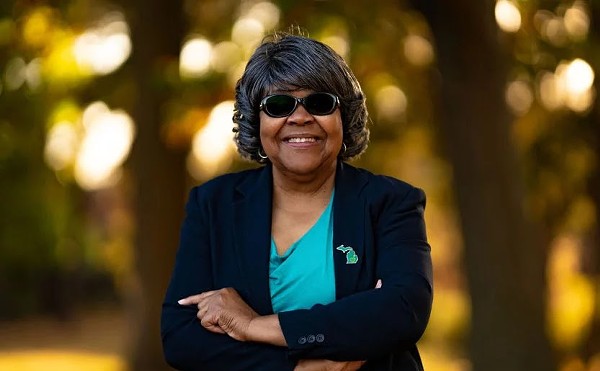"I can't believe how idiotic this plan is," said angry Lafayette Park area resident Sally Bier to Economic Development Corporation officials. Bier's comment came last week when the EDC revealed the latest changes to the Waterfront Reclamation and Casino Development Project plans for the three controversial casinos to be located on the Detroit riverfront.
"I like my home very much. Has anyone looked at what progressive cities are doing? They're not building casinos on their riverfront. I didn't buy in this area to be moved out by the casino developers," Bier concluded to the applause of 60 other residents who attended the hastily arranged meeting of the Citizens District Council for the affected development area.
In defense of the proposed plan, EDC Director C. Beth DunCombe tried to console the roomful of sometimes hostile residents that the newest version of the plan was in the best interest of the citizens of Detroit. DunCombe also introduced two major changes to the project that will utilize more land and money, and add a twist to the project's financing.
In addition to the original 107 acres of prime riverfront property sought by three casino developers, the new plan includes railroad property which is to be turned into a transportation corridor connecting to Gratiot Avenue and the freeway system.
Called the "Dequindre Cut," the 30 acres of unused, below-ground-level railroad right-of-way is to be turned into two auto lanes, a divider and a strip for a future commuter rail system. Cars will enter and exit at Gratiot and at Atwater. The throughway entrance and exit on Gratiot would also be modified to accommodate the new use of the old railroad.
Residents who live in the condos and townhouses next to the sunken tracks were visible annoyed. "Do you think we are stupid?" asked one angry resident. "This is the same plan we rejected when you wanted to use St. Aubin as the express lanes to the casinos."
Several others expressed concern over the traffic noise, pollution and general chaos the casino traffic will bring to their neighborhood. Amid a few boos from the audience, DunCombe confessed that there would be no environmental study done on the affected area that would be affected by the Dequindre Cut.
The second major change in the casino plan was described by DunCombe as "pass through financing." Instead of the city and EDC issuing tax exempt bonds not to exceed $250 million to pay for infrastructure changes to the area, the ante has been upped to $500 million. But according to DunCombe, the anticipated increase won't mean more financial commitments for city taxpayers.
"The city finances it, the casinos pay for it," the EDC director told the confused audience. "The EDC will finance the acquisition of land, the on-and-off-site road and infrastructure changes to the area, then float the bonds that come from the banks. ... The casinos pay for the repayment," DunCombe explained. "The EDC and city don't lose."
Not understanding how the 100 percent increase in issued bonds won't affect the taxpayers and not satisfied with DunCombe's answers, residents requested that a banker or bond expert come to the next meeting to make the explanation clear.
Other casino development questions that have turned into points of contention with area residents include the relocation of the 287 residents and 63 businesses, destruction of at least three historic landmarks, Chene Park parking, confusing timing outlined in the new plan, and the removal of the three riverfront cement silos.





